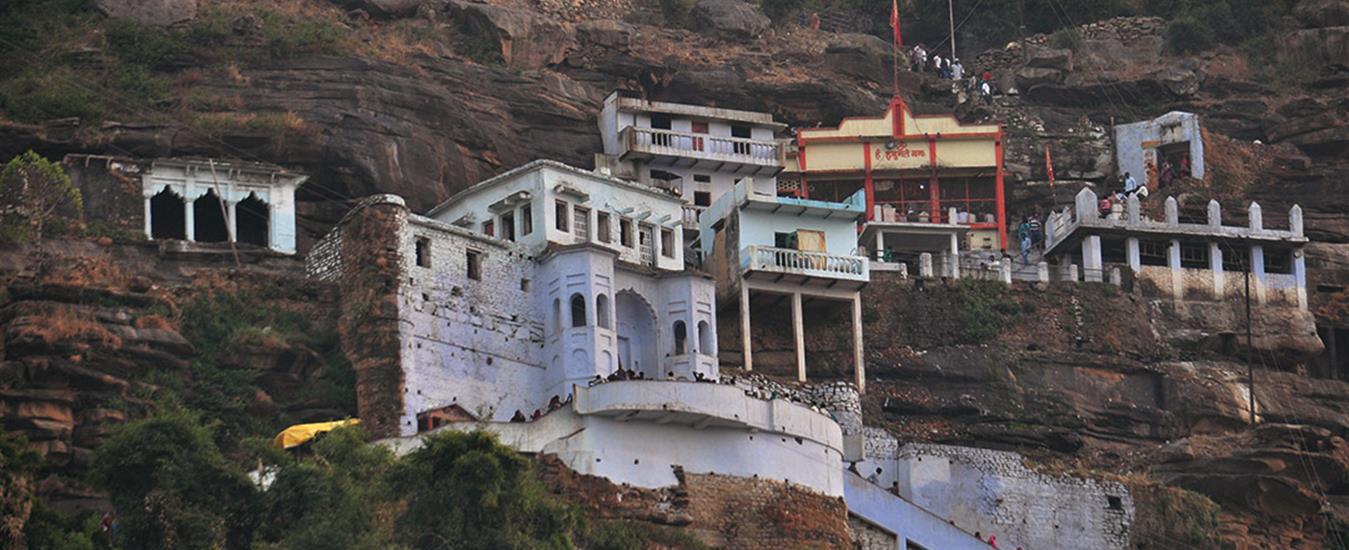Among the 51 Shakti Peethas spread across India and beyond, the Ramgiri Shakti Peeth in Chitrakoot, Madhya Pradesh, holds an extraordinary place. This ancient temple is revered as one of the locations where parts of Goddess Sati’s body fell when Lord Vishnu used his Sudarshan Chakra to calm Lord Shiva’s grief and rage.
It is believed that at Ramgiri, a part of Goddess Sati’s right breast fell, sanctifying the site with divine feminine energy. The goddess is worshiped here as Sharada Devi, a form of Maa Shakti symbolizing wisdom, power, and compassion, while Lord Shiva is worshiped as Chand Bhairav, the protector of this holy seat.
Set against the serene and spiritual backdrop of Chitrakoot, which is itself a place deeply associated with Lord Rama’s exile, the Ramgiri Shakti Peeth combines mythological depth, natural beauty, and spiritual importance, making it a key destination for pilgrims and seekers alike.
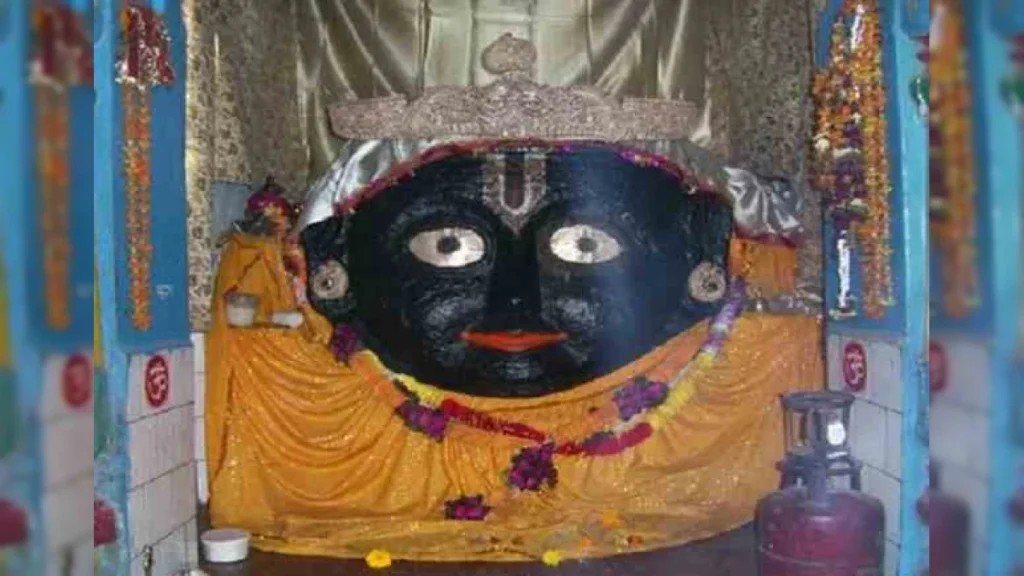
Mythological Significance
The legend of the Shakti Peethas begins with the tragic story of Sati and Shiva. Unable to bear the humiliation of her husband during her father Daksha’s yagna, Sati immolated herself. Grief-stricken, Lord Shiva carried her body across the cosmos in a dance of destruction. To save the universe, Lord Vishnu released his Sudarshan Chakra, cutting Sati’s body into pieces that fell at various locations, creating the Shakti Peethas.
At Ramgiri, it is believed that a part of Sati’s right breast fell, imbuing the land with her nurturing and protective energy. The presiding goddess, Sharada Devi, is worshiped as the embodiment of knowledge, wisdom, and motherly compassion, while Chand Bhairav acts as the eternal guardian of the site.
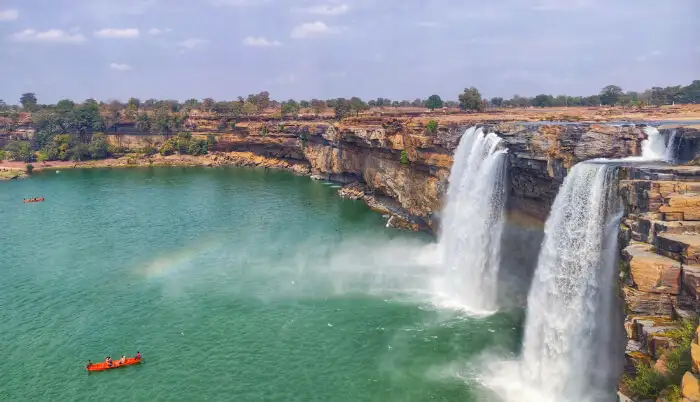
Historical and Cultural Relevance
Chitrakoot itself has been an important pilgrimage site since ancient times. Known as the tapo bhumi (land of penance) of many sages, it is most famously connected to the exile of Lord Rama, Sita, and Lakshmana, who spent a significant period of their vanvaas (forest exile) here.
The Ramgiri hill and the surrounding region have been mentioned in various Hindu scriptures, including the Ramayana, Puranas, and ancient texts on Shakti worship. Over centuries, saints, sages, and devotees have visited the Ramgiri Shakti Peeth to seek blessings from the goddess, making it a vital center of devotion and tradition.
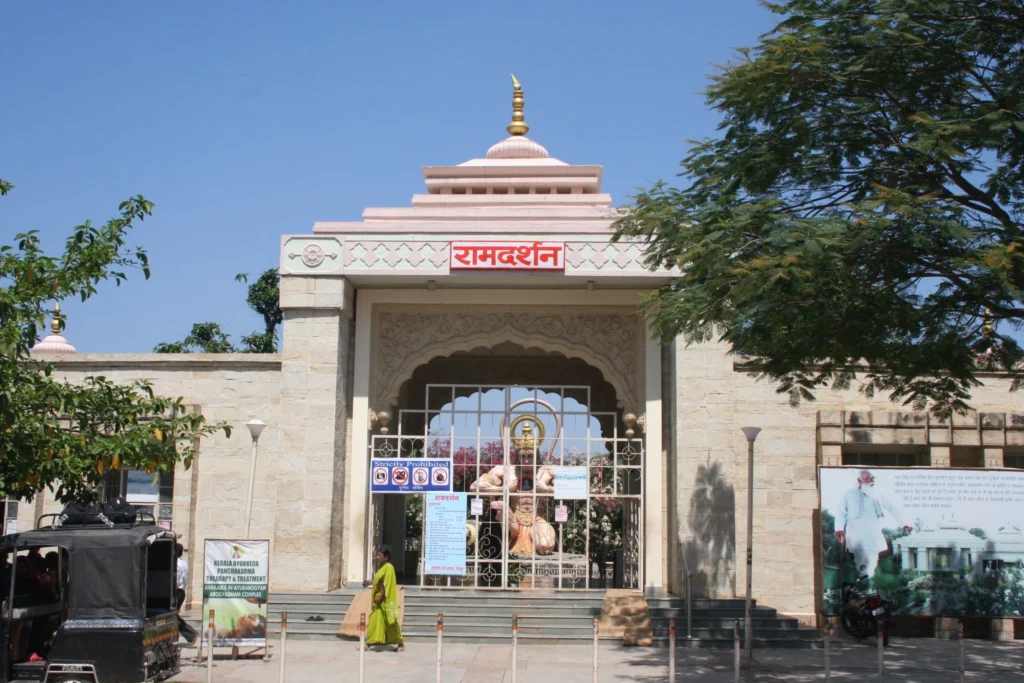
Location and Accessibility
The Ramgiri Shakti Peeth is located in the Chitrakoot district of Madhya Pradesh, a place that straddles the border of Madhya Pradesh and Uttar Pradesh.
- By Air: The nearest airport is at Khajuraho (175 km away). Allahabad (Prayagraj) Airport is another option, around 135 km away.
- By Train: The Chitrakoot Dham Karwi Railway Station is well connected to major cities like Varanasi, Delhi, Lucknow, and Allahabad.
- By Road: Chitrakoot has good road connectivity with nearby towns and cities. Regular buses and taxis operate from Allahabad, Satna, and other nearby cities.
- Local Travel: Auto-rickshaws, taxis, and private vehicles are commonly used to reach the temple from within Chitrakoot.
The temple, set amidst the peaceful hills, offers both a spiritual and scenic experience for travelers.
Architectural Features of Ramgiri Shakti Peeth
The architecture of the Ramgiri Shakti Peeth reflects a blend of traditional North Indian temple design with local influences.
- The sanctum houses the idol of Sharada Devi, often depicted as a compassionate and motherly goddess.
- The temple walls are adorned with sacred motifs, carvings, and religious symbols, resonating with Shakti traditions.
- The temple complex is built in a simple yet deeply spiritual style, focusing on devotion rather than grandeur.
- Pilgrims often notice the powerful vibrations of the temple, which many describe as deeply meditative and healing.
The natural surroundings of hills, forests, and rivers amplify the divine aura of the temple, making it an experience beyond just architecture.
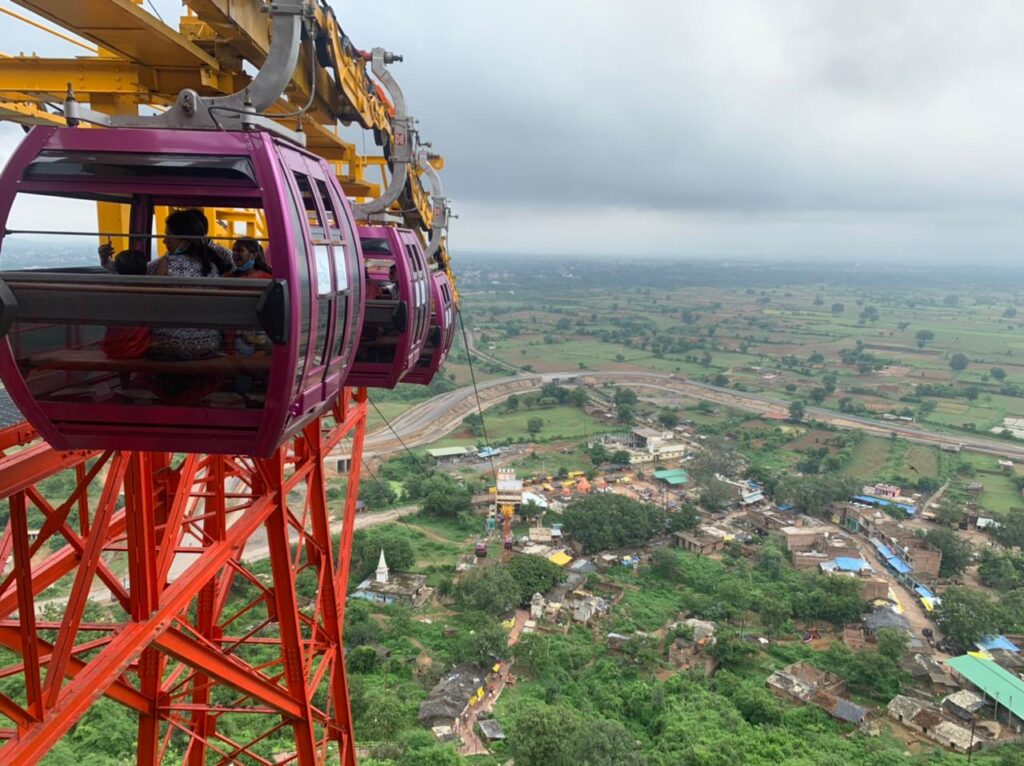
Rituals and Worship
Daily worship at Ramgiri Shakti Peeth includes traditional offerings and rituals that align with Shakti traditions:
- Morning Aarti: Performed with chants, conches, and bells, invoking the blessings of the goddess.
- Abhishek and Archana: Devotees offer milk, honey, flowers, and fruits to the goddess.
- Special Pujas: Conducted during Navratri, Sharad Purnima, and other auspicious occasions.
- Bhairav Puja: Worship of Chand Bhairav is considered essential, as he is the guardian of this sacred site.
Devotees believe that prayers at Ramgiri Shakti Peeth help in attaining wisdom, overcoming obstacles, and receiving divine protection.
FAQs for Ramgiri Shakti Peeth, Chitrakoot
1. Why is Ramgiri Shakti Peeth famous?
Ramgiri Shakti Peeth is revered as one of the 51 Shakti Peethas, where parts of Goddess Sati are believed to have fallen, making it a holy pilgrimage site.
2. Where is Ramgiri Shakti Peeth located?
It is located in Chitrakoot, on the Madhya Pradesh–Uttar Pradesh border, a region deeply associated with the Ramayana.
3. What is worshipped at Ramgiri Shakti Peeth?
The temple is dedicated to Goddess Shakti (Ramgiri Devi), symbolizing divine energy and blessings.
4. What are the temple timings?
The temple usually remains open from 6:00 AM to 8:00 PM, with daily morning and evening aarti.
5. Is photography allowed inside Ramgiri Shakti Peeth?
Photography is generally not allowed inside the sanctum, but may be permitted in outer temple areas.
6. What is the significance of Ramgiri Shakti Peeth?
It is believed that the right breast of Goddess Sati fell here, marking it as a powerful spiritual site.
7. How can I reach Ramgiri Shakti Peeth?
The temple can be reached by road via Chitrakoot town, with the nearest railway station being Chitrakoot Dham (Karwi) and the nearest airport Khajuraho/Prayagraj.
8. Are there any special rituals at Ramgiri Shakti Peeth?
Yes, devotees perform aarti, bhajans, and special pujas, especially during Navratri and Ram Navami.
9. Is there accommodation near Ramgiri Shakti Peeth?
Yes, Chitrakoot offers guesthouses, dharamshalas, and hotels for pilgrims and tourists.
10. What is the best time to visit Ramgiri Shakti Peeth?
October to March is ideal, with pleasant weather and major religious festivals celebrated during this time.

